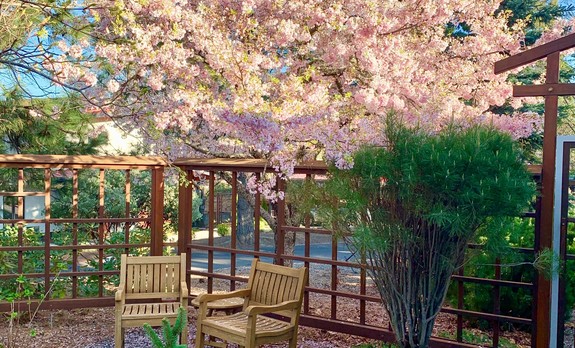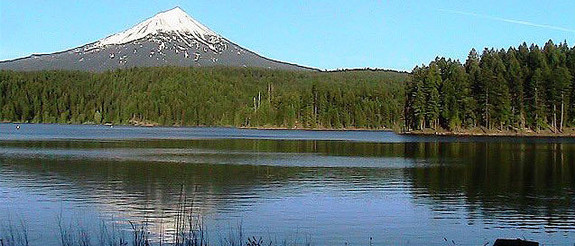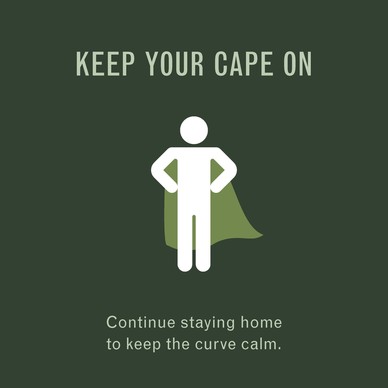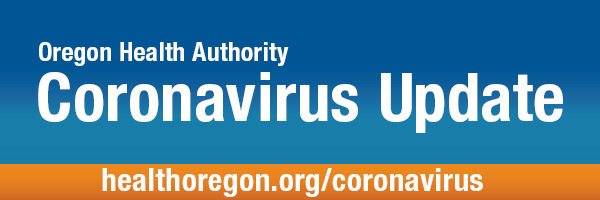 * “I am only one, but still I am one. I cannot do everything, but still I can do something; And because I cannot do everything I will not refuse to do the something that I can do.”
—Helen Keller
 We know you might be missing the outdoors, so we thought we'd bring the outdoors inside. This photo was provided by Manju Lyn Bazzell. Have a photo you've taken and want to share with us? Send it to sen.jeffgolden@oregonlegislature.gov with the subject “Photo Reminder.” We’ll use some in future newsletters.
If you follow the news, you probably know that the ground is beginning to shift this week in Oregon’s pandemic response strategy.
Let me start by clearing up confusion about the Governor’s decision to extend her original Declaration of Emergency by 60 days, to July 6. The purpose is to maintain her ability to adjust to the most serious emergency needs—to suspend, as one example, evictions of people who’ve lost their income—and to keep Oregon eligible for federal emergency response funding. It does NOT mean that the stay-at-home rules will stay as they are into July. We’ve already begun a 3-phase plan for reopening Oregon, with a big step scheduled for next Friday, May 15. The Governor’s Chief of Staff lays out the details of that step, as well as a really good overview of whole plan, in this nine-minute YouTube video.
There’s one development this week that I’m especially happy to see, and some of you helped make it happen. I passed on to Salem your messages that we have to be able to use more outdoor public space, especially with the grim possibility that wildfire smoke could push us back indoors before too long. I think that had something to do with this week’s partial reopening of State Parks.
Closer to home, Jackson County Parks released its reopening plan, which began rolling out May 1. In their plan you’ll see the repeated reminder that “This plan is contingent upon proper social distancing by park users. Large group gatherings could result in alternative actions.” This applies in one way or another to all elements of reopening Oregon. If infection levels don’t increase in Phase I, we’ll see more opening three weeks later with Phase II. But if the infection curve gets steeper, we’re likely to back up into more closures and isolation again. What we do collectively will go a long way in determining Oregon’s path through May and June. If we carefully follow the distancing and protective rules for businesses opening up in Phase I, we’re likely to get to Phases II, and, further down the line, Phase III more quickly.
 |
Willow Lake
Many of you have weighed in with me recently on the broader debate over reopening Oregon and our communities. It turns out that Southern Oregon is like the rest of America on this question: completely divided. Many want to see the stay-at-home routine of April and May continued for a while longer. Others want me to push for the fastest possible opening; Jackson County’s relatively low number of confirmed cases (about 50 as of this writing, and no deaths), the unusually high level of testing we’ve been able to provide, and our county’s more-than-adequate health care capacity all have some people thinking COVID-19 isn’t much of a threat to our valley, and that the economic costs of the shutdown are more than we should bear.
I don’t agree with that perspective, but it’s a mistake to dismiss it out of hand. We’re adjusting course as we go, with a lot of guidance from the most seasoned public health authorities. Your emails made me think very carefully about an elected official’s responsibilities in times like these. The result was this April 28 response to people who’ve contacted me. It’s already a little dated—the video I mention above has more current information—but you’ll get the idea.
One other issue simmering this week relates to whether the state would pass federal CARES Act dollars to local governments to reimburse their COVID-response costs. The CARES Act directed funds to counties and cities with 500,000 people or more, but there are only three of those in Oregon (Portland, Multnomah County and Washington County). We’ve been making the case to Salem that Jackson County and some of its cities have been saddled with COVID costs at the same time that our damaged economy is slashing tax revenues. Local governments are responsible for providing some of our most vital services and don’t have the luxury of firing up the presses to endlessly print dollars the way the feds do. The question of transferring more CARES dollars from Salem to our counties and cities isn’t a simple one, because the economic crash is decimating state tax revenues as well, which means that brutal cuts in state services aren’t far away. But local governments need help. The Governor and legislative leaders understand that, and conversations this week make me confident that help’s on the way.

Senator Jeff Golden
Senate District 3 (Rogue Valley)
-
Governor Brown issued a more detailed plan for Phase 1 of reopening the state. Counties can apply to reopen and provided they meet specific benchmarks, restaurants and bars, hair and nail salons, and retail stores can begin to reopen. Full guidelines for each industry can be found on the OHA COVID-19 webpage.
-
Colorado and Nevada have joined the Western States Pact with Oregon, Washington, and California to ensure sharing of information and best practices and open communication between our states and to take into consideration our connected economies, industries and values as we begin the process of reopening.
-
As part of that plan, Governor Brown also announced last Friday a partnership with Oregon Health and Sciences University (OHSU) a study called “Key to Oregon,” you can view her statements with links to the specific plan here or visit the website. The study will seek to better understand the coronavirus’s infection patterns with testing and precise, real-time mapping. It will also gather essential information to help Oregon’s leaders at the state and local levels make informed decisions around re-opening plans and infection prevention. The study will include attention to vulnerable communities, including Native Americans and people of color. The goal is to get people back to school and work faster while avoiding a second wave of infections.
-
The state has reopened certain parks and outdoor recreation areas for limited day use. Please be responsible while visiting these outdoor areas and continue to maintain social distancing practices and avoid travelling further than 50 miles from your home. For guidelines on how to take advantage of the outdoors while still following best practices to avoid spreading the coronavirus, check out the Governor's press release about the reopening. The Oregon State Parks Department has also compiled an FAQ about the reopenings.
- Governor Brown issued an Executive Order extending the State of Emergency through July 6th. This allows the Governor to maintain current Executive Orders, like the moratorium on evictions and limits on gatherings. It also gives the Oregon Health Authority and the Office of Emergency Management authority to respond to the crisis. The State of Emergency also allows state agencies to waive rules or adopt temporary ones as necessary in respond to the crisis. That said, the State of Emergency can be lifted as soon as we meet the guidelines we've laid out for a safe reopening of the state. So please continue to stay home and social distance as much as possible.
 |

Business Resources:
Social Services:
Meals for All:

For Parents and Students:
 |
Please remember to watch the news and follow the advice from experts at the CDC, OHA, and Jackson County Public Health, and directives from the Governor's office. We'll get through this and we'll do it by working together.
|